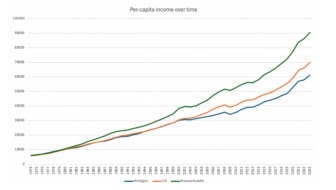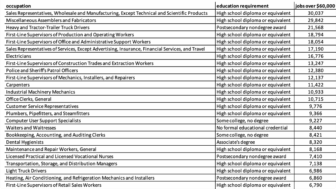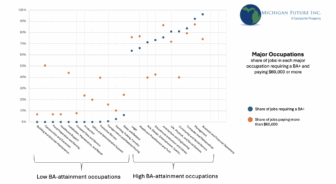
As America confronts the reality of structural racism, it is clear that we must fundamentally reform policing now. It also is clear that redesigning policing is not enough. We need to put on the table topics that have been off the table for far too long.
One of those uncomfortable conversations we need to have is about segregation. All the ways the affluent have put in place policies to keep particularly low-income African Americans from living in their neighborhoods and attending school with their kids.
As we explore in our Improving student outcomes from education, birth to college report, the value of integration is that investments made by affluent families – in schools and public services – spill over and positively impact low and middle-income families that live in the same neighborhoods. With the classes cordoned off from one another, there’s little chance for spillover to occur.
In 2015, Harvard economist Raj Chetty and others published two studies with one central conclusion: where you grow up matters a great deal. The studies found that moving from a high-poverty to low-poverty neighborhood, early in life, has a large positive impact on college-going and future earnings. U of M economist Justin Wolfers wrote in the New York Times that the two Chetty studies are “the most powerful demonstration yet that neighborhoods – their schools, community, neighbors, local amenities, economic opportunities and social norms – are a critical factor in shaping your children’s outcomes.”
Why might low-poverty neighborhoods have such a dramatic positive impact on a child’s development? First, moving to a low-poverty neighborhood gives a child the opportunity to attend a low-poverty school. Research since the 1960s has found the composition of a school’s student body to be more strongly related to achievement than any other school factor. The increased achievement of non-affluent students in affluent schools is one of the most consistent findings in education research, with some studies finding student achievement to be more correlated with the background characteristics of a student’s classmates than with a student’s own background. There is perhaps no better lever to improve educational outcomes for non-affluent students, than to send them to middle-class schools.
But in addition to the opportunity to attend a low-poverty school, a child’s neighborhood impacts virtually every aspect of her life, from exposure to crime to health outcomes to the perception of order – all of which influences a child’s odds of success. As Paul Tough writes in Helping Children Succeed, neighborhoods of concentrated poverty have “few resources to nurture children and countless perils to wound them, physically or psychologically or both.” To the extent an unstable or chaotic neighborhood inhibits the development of a child’s cognitive infrastructure, and fails to offer the enrichment opportunities that affluent children take for granted, growing up in a neighborhood of concentrated poverty can handicap a child for life.
Unfortunately segregation in America is increasing. As the New York Times wrote in a editorial entitled the The Cities We Need:
In 1970, 65 percent of the residents of large metropolitan areas lived in neighborhoods with median incomes close to the median for the entire area, according to an analysis by the sociologists Kendra Bischoff and Sean F. Reardon. Most neighborhoods, in other words, approximated the economic diversity of the broader community. But by 2009, only 42 percent lived in such neighborhoods. Meanwhile, the share residing in either very affluent or very poor neighborhoods more than doubled from 15 percent to 33 percent.
… In the United States, blacks and Hispanics primarily suffer the consequences.
Most poor whites live in mixed-income neighborhoods. In the nation’s 100 largest metropolitan areas, about a third of low income whites — 3.4 million people — lived in high-poverty urban neighborhoods in 2014, according to a Brookings Institution analysis. By contrast, 72 percent of low-income blacks, or 5.2 million people, lived in high-poverty urban neighborhoods, as well as 68 percent of low-income Hispanics, or 6.7 million people.
Life in America resembles an airline passenger cabin: separate entrances, separate seating areas, separate bathrooms.
If you care about providing African American children with equal opportunity, the lever that, almost certainly, matters most is integrated neighborhoods and schools. That means attacking all the policies that have been “created to maintain economic exclusivity”.
We have known this for decades. And, by and large, we know the policies that will reverse race and class segregation. We haven’t used this powerful lever for combating inequality and structural racism because too many affluent white parents––both liberal and conservative––have used their political clout to block integration.
If we are as serious as we claim we are to deal comprehensively with structural racism, sure seems like this topic needs to be on the table now.







